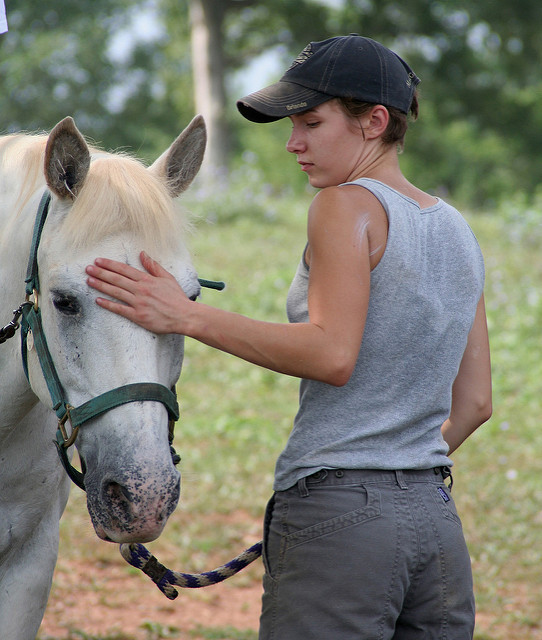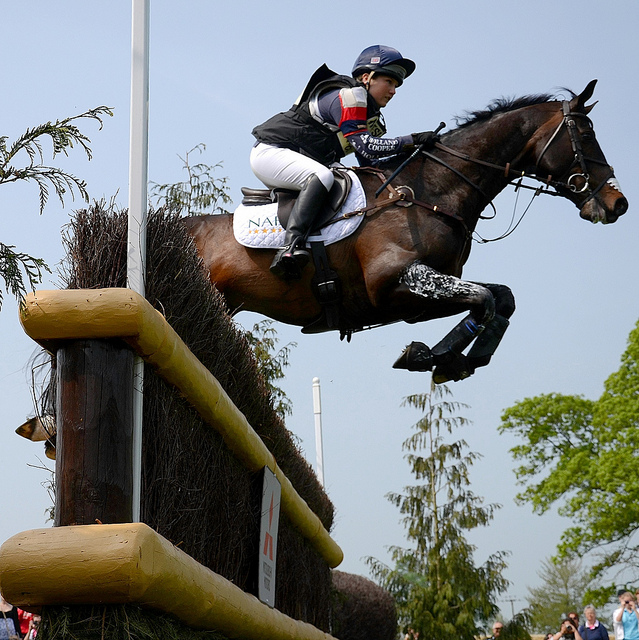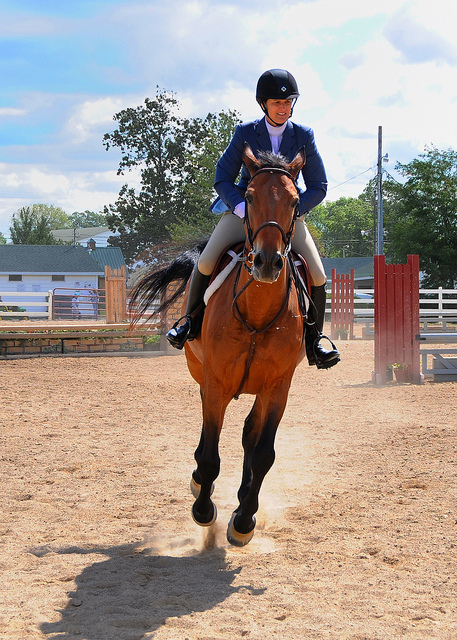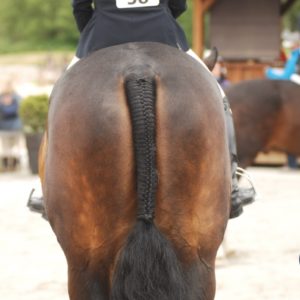People often decide to take up competitive horseback riding for one of two reasons. Either they love sports and they love animals and they want to combine the two, or they hate sports but love animals, and are looking for a hobby that doesn’t include balls, bats, racquets or nets.

Even among the former group of athletically inclined riders, however, there’s a common misconception. Many people assume that riding offers a departure from the physically demanding and intensive training schedules required by other sports like soccer, basketball or tennis, or even highly disciplined art forms like ballet. But for those among us looking to compete at the highest level of equestrian sport that we can—and doing it mostly on our own—the illusion of a “less demanding” full-time sport is just that: an illusion.
Contrary to your high school boyfriend’s opinion, horseback riding is not just the horse doing all the work. In fact, you’d be hard-pressed to find a professional at the top of his or her riding discipline who won’t agree with the idea that a rider’s own fitness should mirror the fitness she expects in her horses. Beezie Madden told More that in addition to hours of riding, she works out at least once a day, including with a trainer three times a week. Reed Kessler does too, for 60 minutes each day—and she boxes like a champ!
Eventing and equitation legends Denny Emerson and George Morris have long touted the virtues of physicality and riding. And perhaps unsurprisingly, neither of them mince words when it comes to the key point: “Be an athlete yourself if you want to have a freaking clue about athleticism [in horses],” Denny has said.
For most of us who work or go to school outside the industry and ride regularly (more on that in a minute), something like three+ days a week in the gym can feel like a lot. For the competitive rider, though, the benefits of feeling stronger and more secure in the saddle and being able to keep up with your athletic partner—come what may in the show ring—are a payoff as gratifying as any results you’re likely to see in the mirror.

(flickr.com/anoldent)
In addition to a rider’s general physical fitness, there’s also the main event: time in the saddle. For someone who’s serious about competing, that means five or six days a week on your horse. And most of those days need to be spent not just training in your particular discipline, but in flat and fitness work for your horse (not just puttering around, or what I like to call, “amateur adulting”). Lateral work and flexion, increasing the elasticity within your gaits and the transitions between them, collection and circles and stretching and bending; this stuff all takes effort. And it gets harder still.
Unlike other team sports, where your coach plans and sets up the drills, and blows a whistle to keep you on pace, riding can often feel like a solitary endeavor. Chances are, no one is going to know if you don’t put the extra time in on his weaker side in your flatwork today, or if you just prefer to lope around in your sofa saddle rather than trying to tackle the more challenging, uncomfortable stuff, that stuff that could actually up your game. Depending on what time you ride, it’s doubtful that anyone will be holding a crop over your head; the decision of whether or not to listen to your trainer on your own time—to push yourself to sit up straighter, keep your leg stiller, and shorten your reins—is probably yours alone. No one will know. But if you’re truly dedicated to improving your performance, you’ll know.

(flickr.com/Tim Simpson)
The same can be said for how much effort you put into your horse’s care. If you’re like me, this is where 80 percent of your barn time is spent, before and after rides each day—not the 30-40 minutes you’re actually in the saddle. Plenty of horse people think they can cut corners with this stuff and that they’ll still get where they’re going (I used to be one of those people, and I can say now from experience, probably not). A few others can afford to have their horses tacked when they arrive and then hand off the reins when they leave. You may certainly argue with the horsemanship aspect of this luxury, but the convenience of it is hard to deny. (Hey, it might actually leave you time to get in that third workout at the gym this week!) Grooming and bathing, tacking and untacking, cooling out, wrapping and cleaning tack… there’s no substitute for doing them all correctly. And many would argue, in doing all of them yourself. But if you do, you know that it takes time. And for many of us, that can be just as valuable as money in your pocket.
All of this fitness and training and care is an aspect of horsemanship that you might call, “the daily grind”. For most of us, the daily grind never really ends, and though we may love parts of it, it’s not something we conquer so much as endure. The grind doesn’t apply to everyone. It’s not for the weekend warriors, or the ladies who sip wine in their breeches and blow-out hair at the VIP show tent, or for anyone who’d consider referring to riding in conversation as,”my hobby.” The daily grind is the struggle of athletes, the kind of struggle you know if you’ve trained seriously for other sports, or been a part of a competitive team. It’s about improving your performance and the performance of your horse like any athlete would: through hard work, dedication, and plenty of blood, sweat, and tears.

(flickr.com/Serge Melki)
What drives you when it’s time to dig deep? Maybe it’s the thought of those blue ribbons, or of earning prestige; a shot at something bigger than yourself. Maybe it’s deeper than that, a feeling of loyalty, teamwork and partnership with your horse, something you can’t quite put your finger on. We all get into this sport for different reasons. The reasons we stay are equally complex.
There are no gold cups for winning the daily grind. There’s no first place for putting in the extra effort on your hacking days, or for choosing to run on the treadmill rather than posting up on the couch. No one may notice that you rode with a head cold and pockets full of Kleenex last week, or that thanks to plenty of elbow grease, your horse looks like a million bucks every time you put him back in his stall.
To be sure, there’s nothing about the hard-earned blisters on your palms that’s as glamorous as the chance to horse show in some tropical location, and nothing about sweating it out at the barn each day that’s likely to ever make you rich. But the daily grind might just make you a horseman, and there are worse things to be than that.



 March 9, 2016
March 9, 2016 






















